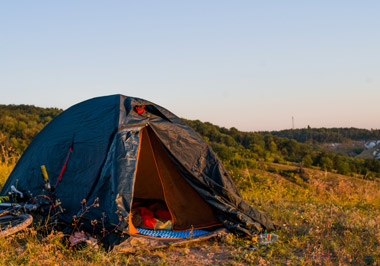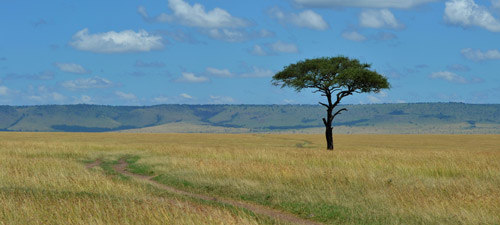Camping sites in Kenya
If you're looking for the best camping sites in Kenya, this guide offers a curated list of top destinations for campers, along with essential tips to plan your adventure.

Exploring the vast savannahs of Kenya is an exciting and rewarding experience. This article details the ideal selection of a camping site, obtaining the necessary permits, the appropriate equipment to take with you, preparing for the local climate and the crucial health measures to observe. In addition, tips on safety while camping, local attractions to discover, organising airport-campsite transport as well as travel insurance and holiday packaging will be discussed.
Best Camping Sites in Kenya – In a Nutshell
- Masai Mara : Pour vivre la grande migration et observer les Big Five.
- Amboseli : Panorama spectaculaire sur le Kilimandjaro et safaris éléphants.
- Tsavo East & West : Aventure sauvage, savane rouge et camping isolé.
- Mount Kenya : Trek en altitude, paysages alpins et nuits en refuge.
- Lake Naivasha : Calme, observation d’oiseaux et camping au bord de l’eau.
- Lake Nakuru : Flamants roses, rhinocéros et camping au cœur du parc.
- Lamu Island : Expérience de camping en bord de mer sur une île swahilie.
Kenya, renowned for its national parks and breathtaking scenery, is also an ideal place for camping enthusiasts. Whether you're looking for a close-to-wilderness experience or a more tranquil setting, Kenya offers a variety of sites to suit all tastes. Here are some of the best places to camp in Kenya.
The Masai Mara is one of Kenya's most iconic places, famous for its great wildebeest and zebra migrations, as well as its abundant wildlife. Camping in the Masai Mara allows travellers to experience total immersion in the park's ecosystem. Numerous tented camps are set up close to the nature reserves, offering glamping experiences with all the necessary comforts. For those seeking a more rustic experience, several camping areas are available, notably in the Oloololo sector and in the Sekenani region.

Located at the foot of Mount Kilimanjaro, Amboseli National Park is another favourite spot for campers. The park is famous for its vast plains, spectacular scenery and large elephant population. Camping in Amboseli offers a unique experience, with opportunities to observe wildlife while immersed in an exceptional natural setting. Public campsites such as Kimana and luxury lodges offer a range of options to suit all types of camper.
Divided into two sections, Tsavo East and Tsavo West, this reserve is one of Kenya's largest protected areas. Tsavo is renowned for its diversity of landscapes, from dry savannahs to lush forests, as well as its wildlife, including lions, elephants and giraffes. Campers can take advantage of special areas set aside for camping, such as those near the park's main entrance and near rivers, where the sounds of nature add an even wilder dimension to the experience.
Mountain enthusiasts will find plenty to do around Mount Kenya, the second highest peak in Africa. Mount Kenya National Park offers a number of camping options, both at high altitude and in the wooded valleys. Camping on Mount Kenya is ideal for hikers and climbers, who can spend the night in mountain huts before continuing their ascent. The majestic scenery, alpine lakes and local wildlife, such as elephants and buffalo, make this an unforgettable experience.
For those who prefer a quieter, more picturesque campsite, Lake Naivasha in the Rift Valley is a popular destination. An ideal spot for birdwatching, including herons and flamingos, Naivasha offers a number of waterside campsites. Visitors can explore the surrounding area by boat or hike around the lake, while enjoying the tranquil atmosphere.
Once you have chosen the ideal site for camping in Kenya, you will need to obtain the necessary permits. Specific permits are required by certain parks and reserves. You should therefore contact the relevant bodies to find out about the procedures to be followed.
During your stay, preserving the environment is paramount. Leave each site as you found it or better, helping to protect Kenya's natural heritage and ensuring a warm welcome for future visitors.
Packing the right gear is essential for a safe and enjoyable camping trip in Kenya. The country’s diverse climates and remote locations require thoughtful preparation and durable equipment.
Having the right camping gear ensures you can explore Kenya's national parks, reserves, and wild landscapes in comfort and safety.
Kenya’s climate varies greatly depending on the region, which makes climate preparedness essential for any camper. From the hot, humid coastline to the chilly highlands, each zone presents its own challenges.
By understanding Kenya’s diverse climate zones and packing accordingly, you’ll be well-prepared to enjoy the outdoors, whether camping by the ocean, in the savannah, or in alpine terrain.
Staying healthy is essential to fully enjoy your camping adventure in Kenya. The country’s natural beauty comes with certain health risks that should not be overlooked.
By taking these precautions, you can explore Kenya’s wilderness with greater peace of mind and focus on what matters: the adventure.
Have you ever thought about the importance of safety when camping? Camping in Kenya presents unique challenges. Understanding these challenges is crucial to a safe and unforgettable experience.
Respect for local wildlife is essential. Wild animals can be attracted by the smell of food or other items in your camp. Store all food in airtight containers and out of reach of animals to avoid any incidents. Interacting directly with wildlife may seem tempting, but it's best not to do so.
Night-time campfires require special attention: keep an eye on them and extinguish them completely before bedtime to prevent any risk of fire.
Use camping equipment correctly to ensure not only its durability but also your personal safety. Incorrect or careless use can cause unexpected accidents.
Finally, remember that Kenya offers a unique adventure but also imposes its own rules that must be respected to ensure your own safety and that of the beautiful environment around you.
Discovering the local attractions offers an added dimension to the Kenya camping experience. Immerse yourself in Africa's wildlife in the national parks, where Mother Nature's magnificent spectacle unfolds in majestic style.
The sublime, multi-coloured landscapes will stay with you forever. Don't hesitate to expand your knowledge by hiring local guides who will reveal Kenya's captivating history and its well-hidden mysteries.
Having covered the aspects of safety and the local attractions available when camping in Kenya, it is now appropriate to look at the organisation of travel between the air terminal and the campsite.
When you set foot in Kenya, there are several alternatives for getting to your campsite. The first is by taxi or private coach. Several service providers offer this service, providing a safe and comfortable way to reach your outdoor holiday destination. Remember to book this service in advance to avoid any inconvenience on site.
For those with an adventurous spirit, hiring a 4x4 could be an interesting option. Not only does this offer a reliable means of getting to the campsite, it also gives you precious freedom to explore the surrounding area during your stay.
Whatever your choice of mode of travel, it's worth stressing the importance of careful planning. Knowing the distances between the air terminal and the site, as well as the road conditions, will remove any unnecessary pressure associated with travelling.
Good organisation of transport from the airport to the campsite ensures a hassle-free experience where the only thing that counts is the pleasure of travelling and discovering the wonders of Kenya.
Taking out travel insurance is an essential step in preparing for your camping adventure in Kenya. This safety net protects you from unwanted surprises, so that your experience is enjoyable and stress-free.
Travel insurance usually covers emergency medical expenses, repatriation in the event of illness or serious accident, and cancellation of the trip for valid reasons. Some packages even include protection against loss or theft of luggage and valuable equipment such as your camping tools.
It is crucial to examine the details of the contract carefully before taking out cover, to ensure that it meets all your specific requirements. Many companies offer tailor-made options to ensure that adventurous campers like you are well covered throughout your stay in this exotic environment.
Taking the time to choose your insurance will not only guarantee a safe stay, but also total peace of mind throughout your adventure in Kenya.
Find out if your question has been answered in the list below
The best time to camp in Kenya is during the dry season, from June to October, when the weather is stable and wildlife viewing is at its peak. November to March can also be pleasant but includes some rainy days. April and May are the wettest months—less ideal for camping but great for lush scenery and solitude.
Yes, camping in Kenya is generally safe if you follow basic safety rules. Always use official campsites in national parks or private conservancies. Avoid isolated areas, secure your food, and respect wildlife safety guidelines. When in doubt, follow the advice of local guides or park rangers.
Some of the best camping sites in Kenya include: